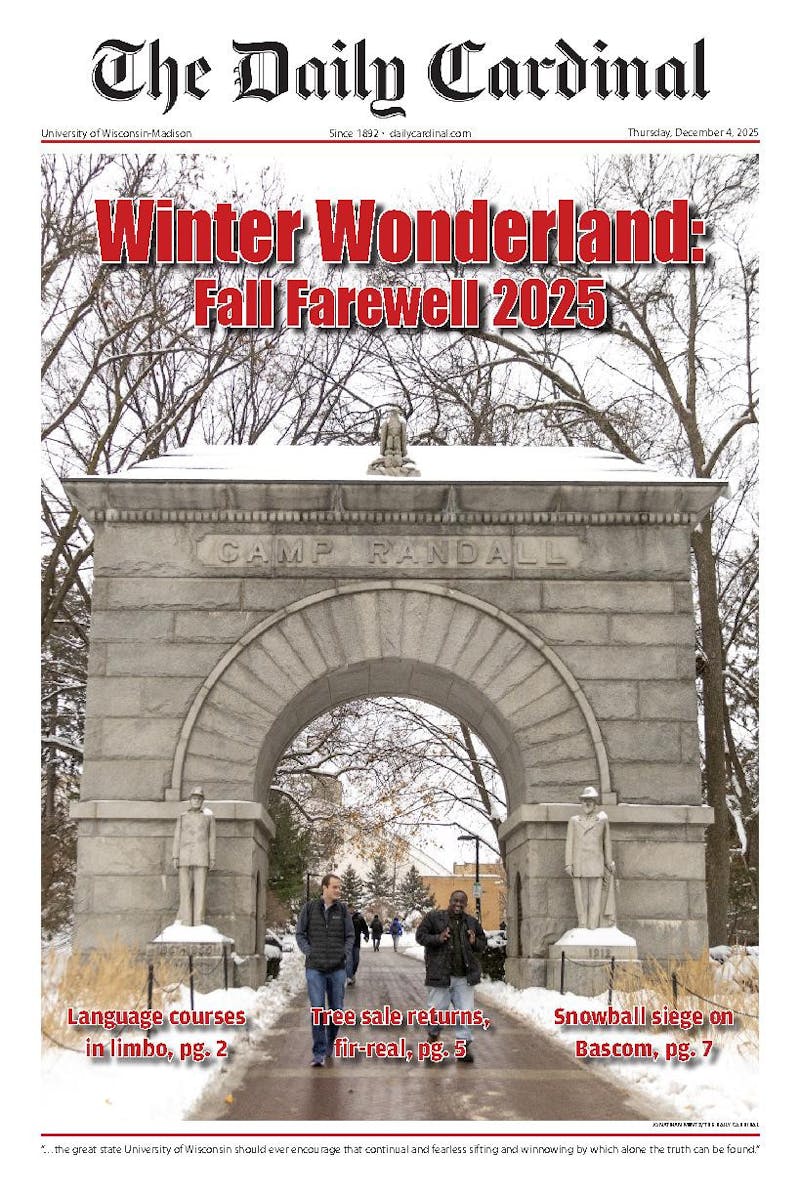Although numerous variations of the caped crusader may be spotted on State Street this weekend, there is only one true Batman at UW-Madison. Whether hanging out with the furry, winged creatures at the nearby Neda Mine or fluttering about campus doing research at the Russell Laboratories, Dave Redell is the real deal.
Redell is a research assistant in the UW-Madison natural resources and wildlife ecology department. He studies bats and their behavior, and probably spends more time with the little mammals than most people.
During the spring and summer months, Redell spends his nights in the dank hollows of the Neda Mine Bat Hibernacula, an abandoned iron mine south of Madison in Dodge County, now one of the largest bat hibernacula in the Midwest. With its ideal underground climate, and large, concentrated numbers of bats, the mine provides the perfect location to gather information and make observations, and has been the focal point of his research.
\Bats need a place to hibernate when they're this far north,"" Redell said. ""Insect activity in the winter drops so they don't have enough to keep their fat reserves, and they have to hibernate'find a cold place with high enough humidity so they don't lose water. There are only so many places they can go.""
The focus of Redell's research is gathering an accurate estimate as to live bats in the mine at a given time and determining if there are specific environmental cues that cause them to leave. Producing accurate head counts of swarms of free-flying bats is not practical, for obvious reasons, so to solve this problem, Redell came up with a unique solution.
He sets up gates fitted with electronic bat-counters at four entryways. These counters monitor the entrances 24 hours a day, counting each bat as it exits and enters.
""A powerful tool with bat conservation is the ability to predict whether there will be a large number of bats leaving a hibernaculum on any particular night,"" said Redell. ""We want to find out what environmental factors bats are cluing in on ... given certain environmental conditions, when are bats likely to leave the mine?""
Redell initially became interested in bats while taking a terrestrial vertebrates class as a UW undergrad. Redell said the professor, Scott Craven, now Redell's major advisor, is responsible for sparking his initial interest in bats. Both agree these nocturnal aviators are one of the most misunderstood animals in the world.
""Bats have been pinned with rabies'just like every other wild mammal, they can get rabies,"" Redell said. ""But it's not like every bat is rabid'one half of one percent of bats ever contracts rabies.""
Craven said that this time of year brings an increased awareness of the subject, and the inevitable continuation of bat ""mythology"".
""On Halloween people see bats hanging up in every grocery store, liquor store, and everything else,"" Craven said. ""The things that people think they know about bats are that they're rabid, they suck blood and they get caught in your hair. These are all misconceptions.\





